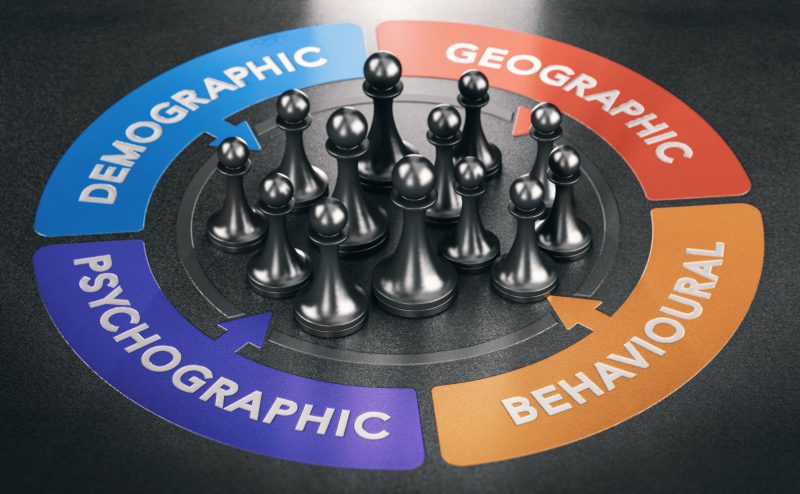Getting to know your customers better means knowing what makes them different. Effective CRM strategy requires segmentation to create distinct groups from a pool with similar profiles.
Segmenting customers targets specific groups for more potent marketing. The most common categories are behavioral, demographic, geographic, and psychographic.
“Tagging them together in the same group only leads to generic cross-selling campaigns that do not generate any fruitful results,” says CRM Consultant Patricia Jones in The Importance of Knowing Your Customer. “It’s important to understand the different parameters on which you can segregate your customers. Let’s say – the type of products/services they buy, frequency of purchase, geographic location of the customers, and so on.”

Behavioral Segmentation
Are there specific occasions that influence a purchase? What items do certain customers abandon in their cart?
What questions do they ask customer service?
Behavioral segmentation provides insight into customer barriers, trends, and purchases.
Demographic Segmentation and Geographic Segmentation
Demographic segmentation is simpler to identify. It includes age, income, education, marital status, ethnicity, and gender. Adjusting marketing to locales and cultures falls under geographic segmentation, allowing creativity in other channels, including time of year.

Psychographic Segmentation Gets Personal
Lifestyle, social class, personality, and beliefs matter in breaking down this segment. It is the basis behind the behaviors. Knowing a person’s values, habits, and opinions gives you a clearer image of your target.
Excerpts from a Business Research Methodology study show the following table. It is Starbucks’ psychographic segmentation.
Behavioral
Degree of loyalty: ‘Hardcore loyals’
Benefits sought:
- Enjoying quality coffee in a relaxing atmosphere
- A place to chat with friends and relatives
- A place to work
Personality: Easygoing, determined, and ambitious
User status: Regular users
Demographic
Age: 22 – 60
Gender:
- Males & Females
- Life-cycle stage: Bachelor Stage young, single people not living at home
- Newly Married Couples young, no children
- 1-Full Nest I youngest child under six
- 2-Full Nest II youngest child six or over
- 3-Full Nest III older married couples with dependent children
Occupation: Students, employees, professionals

Geographic
Region:
- US
- Canada
- Latin America
- Europe
- Middle East
- Africa
- China
- Asia Pacific region
Density: Urban
Psychographic
Social class: Middle and upper class
Lifestyle:
- Mainstreamer
- Aspirer
- Succeeder
- Explorer
- Reformer
Segmentation results seem obvious but require deft use of data science. LMS and GEM’s tech teams continue to broaden CRM capabilities as our partners’ needs change.
Getting To Know Your Customers Better
Getting to know your customers better isn’t through billboards, magazines, and radio ads like in the old days. Many consumers don’t fall under any segmentation, which invites creativity in data science.
“Today, a lot of consumers defy categorization – sometimes deliberately,” says author Michael R. Solomon in his book, The New Chameleons: How to Connect with Consumers Who Defy Categorization. “Their lives are a work in progress and always in beta.”
As the business world has matured, so have consumer demands. Push advertising on any platform is frowned upon. More creative solutions are required to attract the attention of jaded email recipients and digital viewers.
Today’scustomers have seen it all, and unlike generations past, they aren’t buying it.
